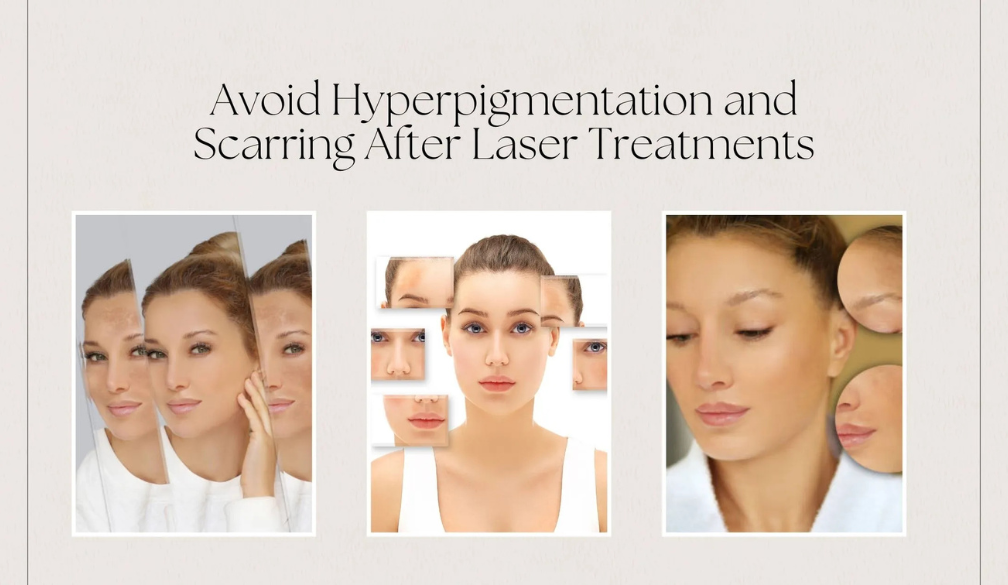How To Avoid Hyperpigmentation and Scarring After Laser Treatments?

With beauty trends evolving, more Australians—both men and women are opting for modern procedures to tackle pigmentation, uneven complexion, and acne scars.
Whether it’s prepping for a big event or just simply wanting to feel more confident, intense pulsed-light (IPL) treatments have become a go-to solution.
But have you ever undergone a session and noticed stubborn dark spots afterward? Or maybe you’ve heard horror stories from friends about unexpected marks appearing weeks later?
While modern technology has made achieving clear complexion easier, there’s always concern about post-treatment side effects like darkened patches and marks.
However, with the right pre- and post-treatment care, you can minimize these risks and have the best result.
In the following blog, we’ll explore and discuss some essential points and how to prevent hyperpigmentation and marks from the procedure. Moreover, we will also cover the best practices to ensure a successful recovery and avoid scarring from laser treatment.
Let’s begin!
What Causes Hyperpigmentation and Scarring After Laser Treatments?
Laser treatments are designed to enhance skin texture. However, without proper care, they can sometimes lead to unwanted side effects, such as hyperpigmentation and scarring.
Some Key Factors To Be Aware Of
- Sun Exposure: Australia’s harsh UV rays are a major cause of post-inflammatory darkening patches (PIH). These patches eventually lead to dark patches and redness that take weeks to fade.
- Melanin Overproduction: People with dark complexion tones or naturally higher melanin levels are more prone to pigmentation after the procedure.
- Harsh Products: Applying exfoliants, strong acids, or retinoids immediately post-process can weaken the complexion and make it more sensitive to marks.
- Genetic Predisposition: If you have a history of keloid scars or sensitive epidermis, you may be at a higher risk of after-the-procedure complications. A consultation before treatment is key to preventing issues.
How Advanced Laser Technology Fades Pigmentation and Scars?
Modern advancements in technology have made it possible to effectively treat stubborn pigmentation and scarring.
Whether you're looking to address dark spots and acne scars or even explore female laser hair removal for a smoother complexion, these treatments offer precise, non-invasive solutions.
Additionally, microdermabrasion skin treatments can complement procedures by enhancing dermis renewal and improving overall texture.
How Advanced Laser Technology Helps?
- Targeted Light Therapy: The devices use precise wavelengths of light to break down pigmentation and stimulate your outer body layer’s natural healing process. It ensures an even-toned appearance.
- Collagen Stimulation: By boosting its production, aesthetic treatments help in skin surface renewal, gradually fading scars and improving texture over time.
- Non-Invasive Approach: Unlike surgical procedures, it is a non-invasive solution that delivers noticeable results with minimal downtime making it a preferred choice for many.
- Skin Cell Regeneration: The heat from intense-pulsed light (IPL) treatment encourages new cell growth, which replaces damaged cells with healthier ones for a refreshed look.
Key Steps To Prevent Dark Spots and Scars After Laser Treatment
Caring for your complexion after the procedure is just as important as the treatment itself. The right post-care steps will help you avoid pigmentation issues, support faster healing, and reduce the chances of scarring from laser treatment.
Whether you've undergone a resurfacing session or safe laser hair removal, proper aftercare ensures smooth, irritation-free results.
Most Effective Ways To Protect Your Skin
- No Picking or Scratching: We’ve all been there—your complexion starts peeling, and the urge to pick at it is so tempting. But, trust us, this is one habit that leads to permanent marks.
- Avoid Hot Showers: Hot water can increase inflammation and slow down healing. Stick to lukewarm water to keep your complexion calm and irritation-free.
- Protect With Clothing: For treated areas that are frequently exposed, such as arms, face, or legs, wearing long sleeves, wide-brimmed hats, and sunglasses can prevent pigmentation from sun exposure.
- Limit Physical Activity: Intense exercise can lead to excessive sweating, which may irritate the healing complexion. Give yourself at least 48 hours to recover before resuming workouts.
- Monitor Skin Changes: A little redness is normal, but if you notice persistent swelling or irritation that won’t subside, it’s time to check in with your dermatologist or specialist.
Why Should You Opt For Professionals for Skin Solutions?
Choosing the right professional for your procedure is crucial to achieving safe and effective results. They stand out due to their advanced technology and commitment to high-quality care.
Why Should You Consider Them?
- Cutting-Edge Technology: Professional skin specialists utilize cutting-edge devices specifically designed to target pigmentation and scars with precision.
- Premium Care Standards: From your initial consultation to post-treatment care, professionals prioritize your safety, hygiene, and overall comfort.
- Proven Results: Many clients have witnessed remarkable improvements in their skin, backed by compelling before-and-after success stories.
- State-of-the-Art-Facility: Reputable skin clinics are equipped with the latest advancements in skincare technology, offering a modern, relaxing, and professional environment.
Final Thoughts
Such treatments can deliver amazing complexion improvements, but proper care is essential to avoid unwanted side effects like darkened patches and marks.
Taking care of your skin after the treatment is essential, with steps like gentle hydration and sun protection helping to maintain results and prevent irritation.
Regular follow-ups and expert advice are important to ensure long-lasting, safe outcomes. Consulting a professional is always a great idea if you’re looking for personalized guidance on how to care for your skin post-laser treatment and ensure a smooth recovery.









